Major Local Advocacy Campaigns
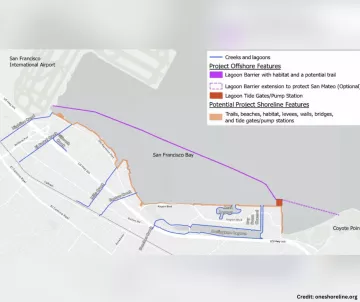
OneShoreline Offshore Barrier
Burlingame/Millbrae
San Mateo County’s Flood and Sea Level Rise Resiliency District, known as OneShoreline, was formed in 2019 to address sea level rise, flooding, coastal erosion, and regional stormwater infrastructure throughout San Mateo County. OneShoreline’s work often spans multiple jurisdictions and involves a variety of public and private stakeholders.
OneShoreline recently came forward with a drastic flood protection plan for Burlingame and Millbrae that entails building a 2.7 to 3.3 mile long offshore barrier, creating a vast lagoon that extends from the San Francisco Airport to the northern edge of San Mateo. Three existing creeks would flow into the lagoon area. The plan calls for building the structure in the Bay, in defiance of a 50-year-old state law forbidding such encroachments to preserve and restore Bay Ecology. The barrier would include tide gates that could maintain some tidal flows into the lagoon when open, or hold back the tides when closed. As sea level rises, the gates will be closed more frequently and eventually closed at all times.
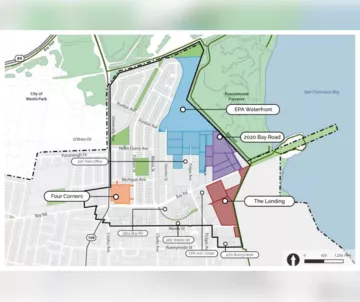
Ravenswood Business District Specific Plan Update
East Palo Alto
The City of East Palo Alto last year kicked off planning to add 4.15 million square feet of new office space to the Ravenswood Business District/4 Corners area, nearly quadrupling the office space currently allowed; Mayor Romero likened that to adding NINE Transamerica buildings.
For this small (2.4 square mile) city, that expansion would have caused tremendous local impacts on traffic, put at least 25 percent of residents at risk of displacement, and installed massive, eight-story buildings directly abutting the Bay Trail and East Palo Alto’s wetlands, putting critical wetland ecosystems at risk. In November 2021, they scaled back the plan to not exceed 3.35 million square feet, but significant concerns remain.
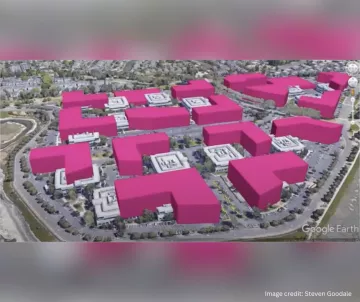
Redwood Life Development
Redwood Shores
Redwood City is considering a massive new biotech development project, spanning over 25 years of demolition and construction, that could negatively affect wetland ecosystems and shorebirds at the Redwood Shores Ecological Reserve as well as the health and safety of residents.
The developer, Longfellow, has asked for a new zoning plan that would allow new development at three times the size and intensity of buildings currently in the project area. The result would be 130 ft-tall high-rises permitted to work with hazardous organisms such as influenza and COVID-19. The daily operations of biolabs routinely involve hazardous materials transport and storage, creating environmental and public health risks. Along with these massive structures and high risk uses would be the shrinking of setbacks that protect ecosystems and community members. Close to the project site are multifamily residential neighborhoods with a library, schools and housing.
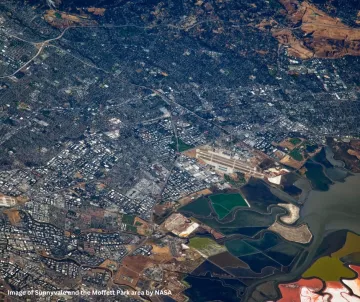
Moffett Park Specific Plan Update
Sunnyvale
Final Specific Plan Adopted 2023: Environmental Wins in Sunnyvale’s Moffett Park Specific Plan (MPSP).
Sunnyvale envisions Moffett Park as a new “Eco-Innovation” district, presenting an opportunity for transformative planning to create a future mixed-use district that is resilient, biodiverse, sustainable, and livable. The proposed land use map lays out office, housing, industrial and mixed-use activity zones, but that’s as far as it goes. Putting the “ecology” into “Eco-innovation,” will require dedicated spaces and specific, dependable commitments to ensure flood resilience, biodiversity, sustainability and livability.
Issues Spotlight
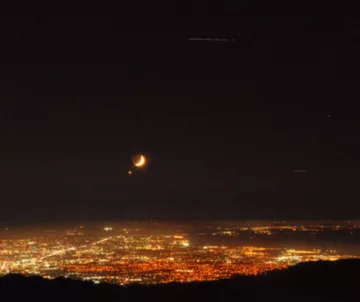
Dark Sky
Life on Earth has a lot in common. Together we have evolved under consistent cycles of day and night. These rhythms are deeply intertwined with our most important behaviors and biological functions. Today, one thing which most living beings have in common is the loss of our dark sky. 80% of the world’s population lives under light-polluted skies, which is so extensive that the Milky Way, a band of white in our sky, remains hidden from more than one-third of humanity. The stars, which have inspired humans for generations and shaped our biology for far longer, have vanished.
What do we lose when we lose the night sky? The loss of beauty is itself worth mourning. Unfortunately, when we lose the night sky we lose a lot more than a muse; loss of the night sky is detrimental to our physical health and the health of our ecosystems.
Additional Advocacy
In addition to our Main Campaigns, we’re involved in many cities on a variety of different initiatives. Click here to learn more.
Click here to see videos explaining Bay-related topics such how nature-based solutions can protect us from sea level rise.
Interested in joining our free educational program to learn about Bay ecosystems and how YOU can protect them? Click here to learn more about our Bay Advocate Program.